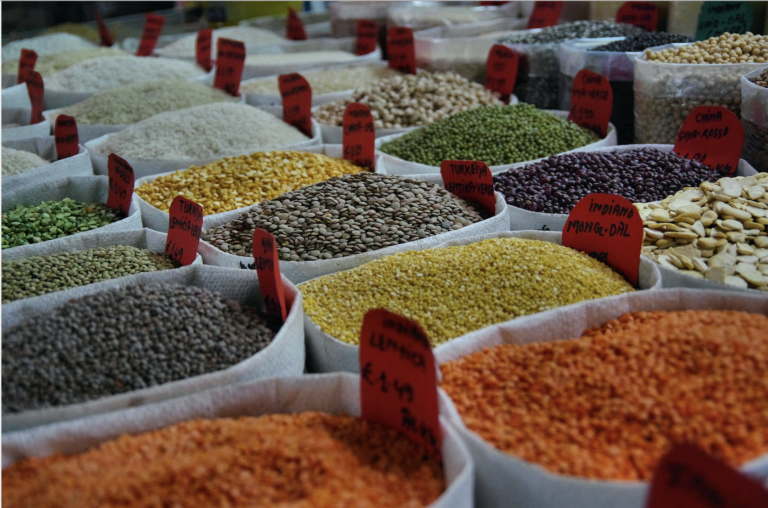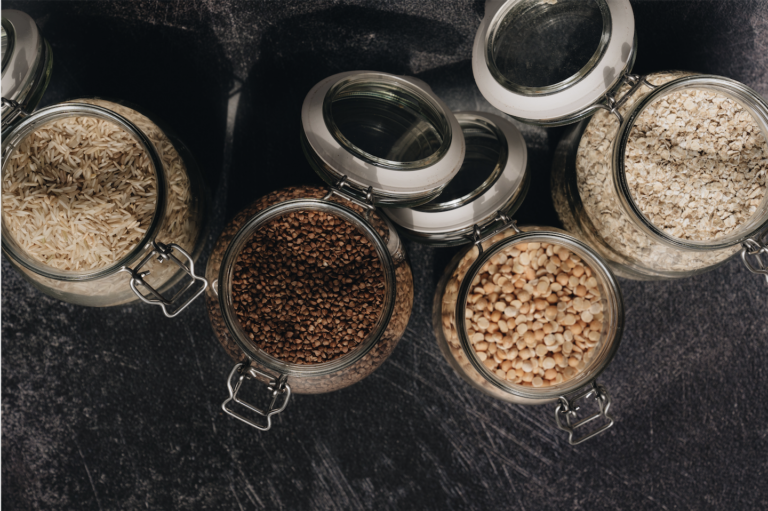From the perspective of a carbohydrate-loving food scientist


As a food scientist, there are certain words on food labels that really irk me.
The term “natural” is a great example of this.
There’s no definition for what natural means in the food industry. Any company can slap the word natural on their food products, yet I’m guessing most consumers assume there’s some rhyme or reason behind the term.
There’s not.
If you’re a person that shops for natural foods, I highly suggest starting to look for the word organic instead.
Any foods labeled organic follow strict rules set by the government. Producers are regulated and audited by the United States Department of Agriculture and there are real repercussions if the term is misused.
The same is not true for natural.
And my grievance with ancient grain is similar. It’s a term that’s overused and under-regulated.
So, what does “ancient grain” even mean?


As a food scientist, I’m someone who likes a legal definition for any labeling terms because that forces every food company to follow the same rules and regulations.
You might see where I’m going with ancient grains…
If you try to find a definition for ancient grains on the United States Department of Agriculture (USDA) or the Food and Drug Administration (FDA) websites— the two main agencies that regulate the food industry — you’re going to come up with nothing. No definition. No guidance.
And that’s exactly the problem!
That means each and every company can have their own definition for ancient grains.
The closest thing to an authority that has offered up a definition of ancient grain is the Whole Grains Council. Here’s how the council starts their definition:
“There is no official definition of “ancient grains.” All whole grains in the larger sense are “ancient” — they all can trace their roots back to the beginnings of time.”
So, that’s probably not what you were hoping for.
The Whole Grains Council goes on to say:
“However, here at the Whole Grains Council, we generally define ancient grains loosely as grains that are largely unchanged over the last several hundred years.”
Essentially, any grain that hasn’t been recently domesticated in the past couple of centuries can be considered an ancient grain.
If we follow this loose definition, you start to see a list of ancient grains that looks something like this:
- Sorghum
- Millet
- Teff
- Farro
- Spelt
- Freekeh
- Amaranth
- Buckwheat
But in no way is this an official list, because, again, there’s not a legal definition. Each company can make up their own definition to fit their agenda. Their list of ancient grains could look very different from mine.
What I’m trying to say is that anyone is free to add or subtract grains from the list I compiled above solely based on what they believe is an ancient grain.
And without any regulation, the term ancient grains has transformed into a marketing gimmick that helps companies sell their foods at exorbitant prices.
So, all I’m saying is to approach these products with skepticism. Feel free to save some of your hard earned money by buying normal grains because there’s really not a true distinction between ancient and modern grains.
All right, I’ll end this part of my rant because it’s time to move onto my second grievance with ancient grains.
Ancient grains are only ancient to the West


The grains that are now being marketed as ancient are really just grains that the Western palate has largely ignored.
It’s simply that until recently, these grains weren’t popular in the Western diet and therefore they wern’t imported to the West. But, in other parts of the world the grains have been commonplace throughout time.
It’s just that someone else has been planting, harvesting, and eating these grains throughout history, not the West.
And just because a grain sounds exotic to you doesn’t mean it somehow has unparalleled nutrition compared to our normal, everyday grains.
In other words, there’s no reason the grains you eat need to be ancient, unfamiliar, or expensive.
It’s more important to eat whole grains


I’m not saying that ancient grains aren’t nutritious, because for the most part they are. But, the reason they’re nutrient-rich foods is that they’re a whole grain, not a refined grain.
Refined grains are carbohydrate-heavy since they are processed to remove two parts of the grain kernel — the bran and germ — leaving only the starchy endosperm.
Whole grains, on the other hand, contain all parts of the grain kernel providing extra nutrients like vitamins, minerals, antioxidants, and fatty acids.
My point being that it’s more important to eat whole grain foods rather than searching for ancient grains that you don’t even know how to cook.
I’m not some hater of ancient grains — I’ve eaten way too much quinoa for that to be true.
But, I do think the term can be slapped on food products just so that producers can charge a premium.
There’s absolutely nothing wrong with buying brown rice or whole wheat bread.
Simply because you haven’t heard of a grain doesn’t make it superior. It’s more important to focus on buying whole grains, not ancient grains.

